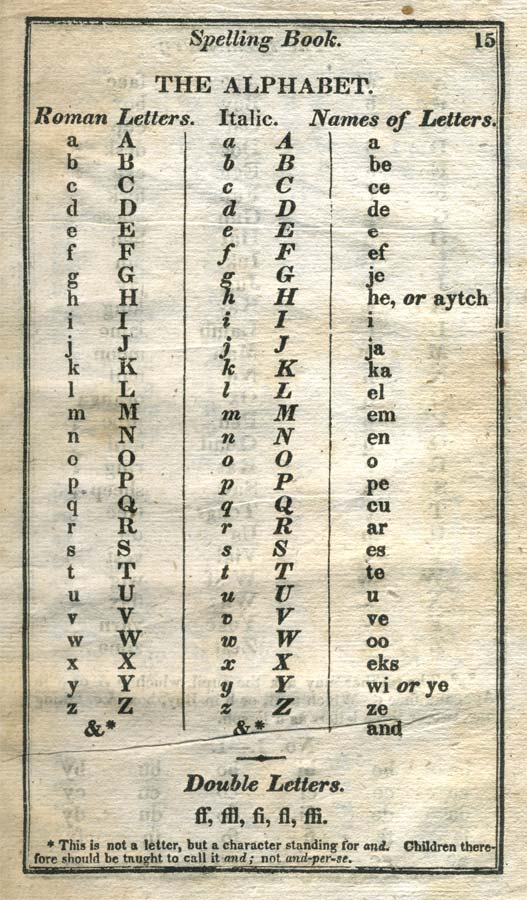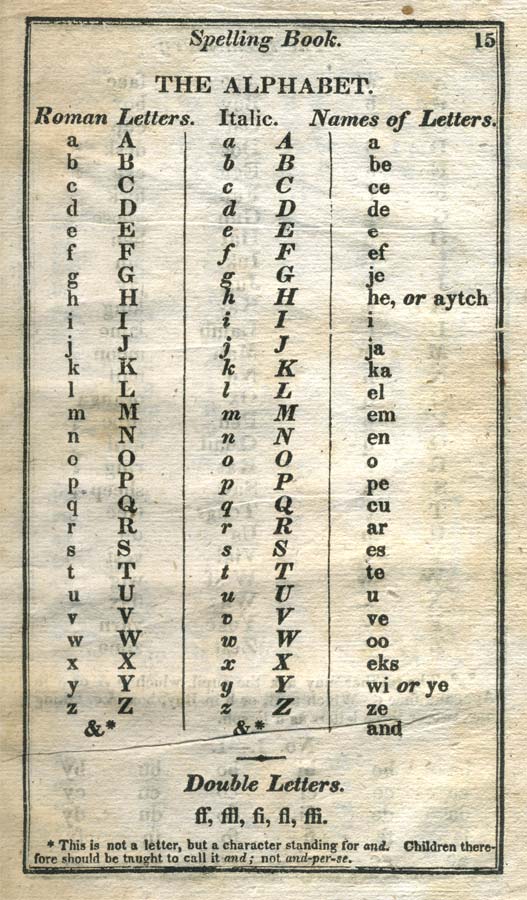One of my favorite bits of typographical trivia holds that the “&” character is properly called “per-se and”, meaning “the word ‘and’ in and of itself”. This character was much more commonly used in the 18th and 19th centuries; it was even considered the 27th letter of the alphabet.
But just yesterday I learned that this view wasn’t universally held. I have an 1820s copy of Noah Webster’s Blue Backed Speller on my bookshelf. Leafing through it, I found that the great American lexicographer and educational reformer also included “&” in the alphabet. Though according to a tiny footnote on the same page, he wasn’t down with the name at all:

Now, Webster’s spelling book went through 385 editions in his own lifetime; it sold 60 million copies by 1890. There probably wasn’t a school child in America that had not sweated over its pages. Yet, somehow, throughout the 19th century, generations of elementary school teachers roundly ignored Webster’s advice, and students continued to recite “X, Y, Z, and per-se and” until they had ground it down into the now familiar “ampersand”.
The moral of this tale is, I suppose, don’t put anything important in a footnote. But I do wonder what we’d call the ampersand today if Noah Webster had printed his advice just a little bigger.



